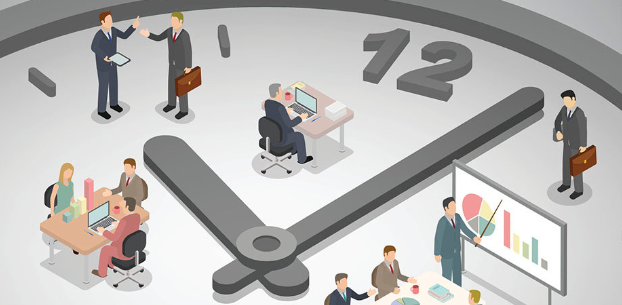At a recent HR leadership conference in Toronto, Canada, change was the constant. It crept into pretty much every presentation, lunch table discussion, and coffee break chit chat. Everyone seems to be brandishing the same notion. It’s a time of transition and significant change. And it’s turning the business world upside down. As fiscal year 2017 ends, the following are top changes to prepare for in the coming year.
Changing HR Roles
How is HR transforming? Personalization certainly appears to be taking a front seat. What do top performers need, for instance? They’re the ones who are going to drive organizations. One size does not fit all. HR leaders are talking about recognizing that fair does not mean equal, and becoming more flexible as a result. Critically, flexibility also applies to different departments and divisions, understanding their unique levels of maturity and adjusting to their needs rather than force-feeding blanket-wide HR strategies.
Trending talk is equally hot around:
- The increasing role of business partnerships
- Having a strong cross-functional understanding
- Acting with agility and resilience
- The expectation for HR to quickly adapt to change and help drive the agenda with leaders
- Bringing people into design thinking
- Engaging talent from the bottom up
- Becoming more of an empowering model rather than a nanny service
Changing Environments
In 2016 the value of global merger and acquisition deals reached 3.24 trillion dollars U.S. Some 45% of this activity involved the United States, making it the largest M&A market in the world. The Boston Consulting Group’s analysis of M&A activity in 2016 and during the first half of 2017 point to three global trends: China’s increasing appetite for international M&A, private equity’s insatiable need to invest, and the growing volume of deals involving tech targets.
While changing environments may not apply to all, it’s a burgeoning trend. And a difficult HR undertaking. When two legacy cultures are coming together, getting employees engaged means finding out where each culture can improve. It’s about transparency and communication, having open conversation about what works and what’s no longer relevant.
The consensus expressed by HR pros is that employee surveys are a solid first step to find commonalities and differences, create benchmarks, report on progress, and show success.
Changing Belief Systems
Gone are the days of servant/leader. Rather than command and control, organizations are flat lining their hierarchical structures. Title isn’t important. Career mobility is cross-functional (which is why having a strong cross-functional understanding is an HR imperative). Silos are disappearing. Yet post-secondary business students are educated under a business model that isn’t quite relevant and then entering the work world with misguided values. Conversely employees with years and years of service are finding the transformation discombobulating. Amid such change HR is challenged by these basic belief systems and finds itself helping people cope and adapt.
Changing Capabilities
The kinds of capabilities organizations want is changing alongside workplace change. A trend more people are talking about is the increasing demand for emotional savvy over intellectual prowess. EQ over IQ. Creativity and innovation over capability. HR practitioners report widespread shifts in skill set requirements. It’s about expertise and interests. Recruiting and retaining employees with refined interpersonal skills, the ability to work well with others, the confidence, discipline, and self-motivation to work with empowered autonomy under nominal supervision.
Changing Workforce
According to 2016 population data released in June 2017 by the Centers for Disease Control and Prevention, the number of births in the United States hit an historic low, falling 1 percent from a year earlier, bringing the general fertility rate to 62.0 births per 1,000 women ages 15 to 44.
As birth rates decline and immigration takes on a stronger strategic role to support aging populations and shrinking pools of talent, inclusion and diversity in the workplace becomes more important than ever. HR professionals report spending more time focusing their organizations and recruiting practices on building a workforce that resembles the communities where they work and the clients they serve.
And let’s not forget the influx of Millennials. They’re an open-minded population, largely receptive to the diversity and inclusion of different ethnicities, religions, disabilities, orientations, educations and ages. They’re smart. They learn fast. They don’t need lots of repetition – they do something a few times, then are ready to take on the next challenge. Their shelf life can be short.
HR professionals continue to grapple with how to prevent Millennials from reaching a plateau, losing engagement and moving on. The trend, for the foreseeable future, is still hitched to mentoring youth (which often becomes reverse coaching when it comes to technology). It continues to identify and provide the skill development Millennials need so they can tease out their roles. And thereafter, it stays focused on giving them opportunities to become team leads or line managers. An interesting, not quite yet trend, is for HR to look beyond their own organizations when growth opportunities are limited; to create time-defined learning opportunities externally, in partnership with other organizations of like-mind. Hence the hot trending talk about increasing business partnerships.
Entrepreneur, TV personality and venture capitalist, Bruce Croxon, has seen lots of organizations flourish in changing times. And lots of organizations flounder. His advice: “Nothing, from timing to technology, is more important than the people you put around you.”
Putting the right people into the right roles is central to HR and in 2018 will continue to be an increasingly strategic and challenging trend.





